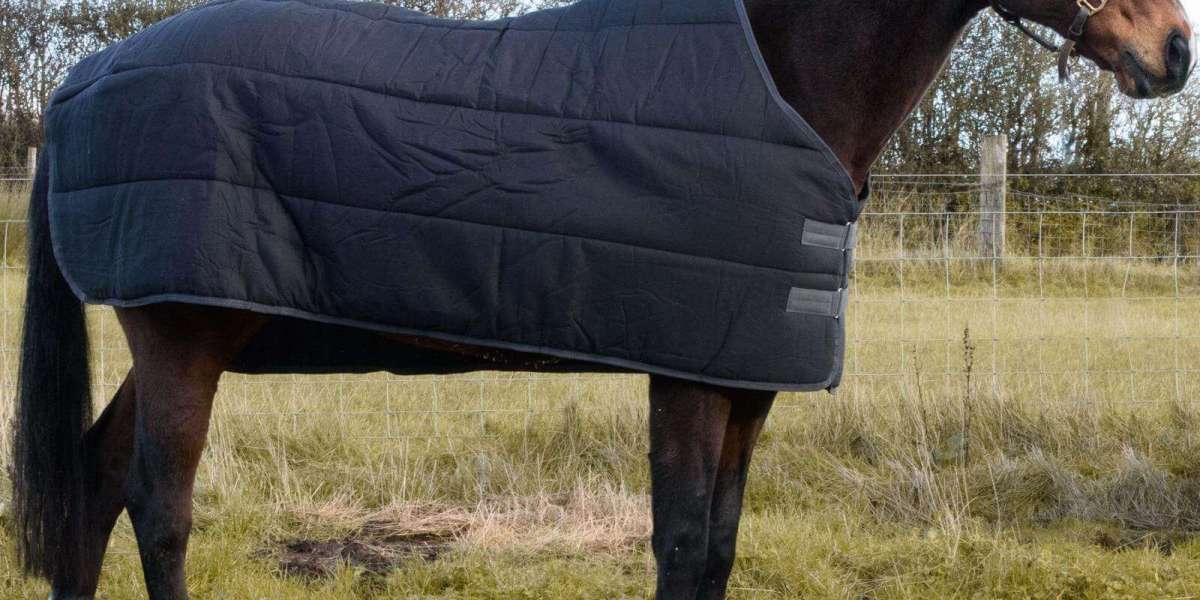As winter approaches, our horse friends should be as comfortable as possible while they face the weather. Getting the right winter rug isn't just a matter of style; it's also important for their health and well-being during the cold months. But there are so many choices that it's hard to choose, avigating the world of winter horse rugs can feel daunting. Fear not, fellow horse parent! This guide will equip you with the knowledge to choose the perfect rug, prioritizing your horse's comfort and warmth above all else.
Figuring out what your horse needs
Before diving into rug specifics, remember one size (or weight) does not fit all. Each horse has unique needs based on several factors:
Age: Younger horses and seniors require additional warmth compared to adults in their prime. Their thermoregulatory systems are still developing or might be less efficient due to age. Younger horses might also be more active, generating less heat naturally.
Weight and Body Condition: Thinner horses, with less fat reserves for insulation, need more warmth compared to heavier horses with a thicker fat layer. Consider your horse's current body condition and whether they are likely to gain or lose weight over winter.
Clipped Coat: Clipped horses lose their natural thermoregulatory ability and depend entirely on rugs for warmth. Whether you clip your horse for performance or simply for easier grooming, remember they'll need a heavier rug than an unclipped horse.
Turnout Time: Horses spending extended periods outdoors exposed to the elements need heavier rugs than those with limited turnout in sheltered paddocks or stables. Consider the average temperatures, windchill, and precipitation during your horse's turnout times.
Activity Level: Highly active horses generate more heat through movement, potentially needing lighter rugs than less active ones. However, even active horses need adequate warmth during rest periods and when turnout conditions are harsh.
Individual Tolerance: Some horses naturally feel the cold more than others due to breed, individual physiology, or past experiences. Observe your horse's behaviour for clues like shivering, muscle tensing, or seeking sheltered areas.
By understanding these factors, you can create a personalized "winter wardrobe" for your horse, ensuring they stay comfortable and healthy throughout the season.
Decoding Rug Weights
Once you understand your horse's individual needs, let's explore rug weights and their suitability for different situations:
Lightweight Turnout Rugs (0g-100g): These lightweight turnout rugs are ideal for mild climates, clipped horses in transition between seasons, or short turnout periods in calm, not freezing, temperatures. They offer a thin layer of protection without overheating the horse.
Mediumweight Turnout Rugs (100g-200g): These versatile rugs strike a balance between warmth and breathability, making them great for most winter conditions. They're suitable for a broader range of horse types and turnout times, offering moderate warmth without being bulky.
Heavyweight Turnout Rugs (200g+): If your horse faces frigid climates, remains unclipped throughout winter, or spends long periods outdoors in harsh weather, these heavyweight rugs provide essential insulation. They're thicker and warmer, perfect for the coldest months and extended exposure to the elements.
Remember, these weight ranges are guidelines. Consider your horse's specific needs and climate when making your final decision.
Fit is Key
A perfectly fitting rug makes all the difference! An ill-fitting rug can restrict movement, rub sensitive areas like shoulders and withers, and even cause discomfort or sores. Here's how to ensure a snug yet comfortable fit:
Measure meticulously: Utilize a measuring tape to get precise chest girth, topline length (from withers to tail dock), and neck drop measurements. Don't rely on guesswork or previous rug sizes. Refer to size charts specific to the chosen rug brand, as sizing can vary between manufacturers.
Adjustable features: Look for rugs with adjustable chest closures, shoulder gussets that allow for freedom of movement, leg straps that prevent the rug from shifting, and detachable neck covers for customized warmth and weather protection.
Freedom of movement: Observe your horse walking, trotting, and even rolling to check for any restriction in movement. The rug shouldn't bunch up, gap excessively, or impede their natural gaits.
A well-fitting rug should hug your horse's contours comfortably without being constricting. Remember, you can always layer lighter rugs underneath for added warmth if needed.



